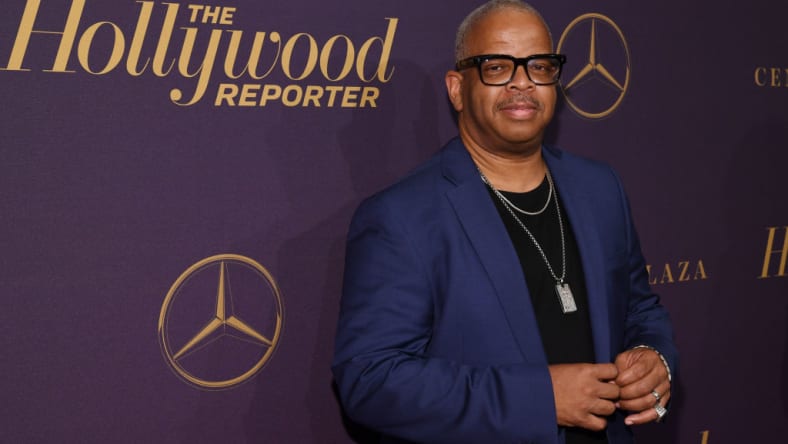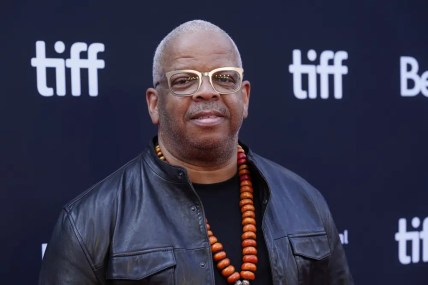Terence Blanchard, Camille A. Brown talk ‘Champion,’ the latest Black opera to hit the Met
INTERVIEW: TheGrio spoke with Grammy-winning composer Terence Blanchard and Tony Award-nominated choreographer Camille A. Brown about their latest collaboration.
In 2021, Terence Blanchard made history when he became the first Black composer to stage an opera — “Fire Shut Up in My Bones” — at New York City’s Metropolitan Opera.
Coupled with a libretto based on Charles M. Blow’s book of the same title and featuring Tony Award-nominee Camille A. Brown‘s choreography, “Fire” was a sensation as audiences returned to the New York stage amid COVID-19.
Last week, “Champion,” another Blanchard-composed opera, premiered at the Met. This project is special because it’s actually Blanchard’s very first opera.

The five-time Grammy-winning trumpeter and composer first wrote “Champion” with librettist Michael Christofer over a decade ago. The show premiered in 2013 in St. Louis and would go on to play in San Francisco, Washington D.C., and Boston.
For “Champion,” Brown returns as the choreographer, bringing her encyclopedic knowledge of Black dance to this ambitious production. Blanchard and Brown spoke with theGrio about “Champion,” collaborating and bringing Black stories to opera.
“Fire Shut Up in My Bones” told Blow’s story of abuse, identity, trust and vengeance through the eyes of a Black man growing up in the South. In Blanchard’s hands, the story was multi-layered with emotions ranging from brooding to uplifting to somber. Now comes “Champion,” a chilling true story of a queer Black American boxer.
“It’s about Emile Griffith, a welterweight champion who fought a guy by the name of Benny Paret,” Blanchard told theGrio. “They fought three times. The first two fights, each one of the guys won a fight. The third fight, Benny Paret was trying to get an advantage over him, and he knew of Emile’s sexual preferences and he called him out on it in a press conference by using a very derogatory term for gay males.”
Griffith takes his rage out on Paret in the ring, resulting in a deadly outcome. “They get into the fight. Emile hit Paret some 17 times with less than seven seconds in a corner. He falls, passes out and never regained consciousness. And that started the slide in Emile’s life.”
“Champion” chronicles the ups and downs of Griffith’s life and the ironic dichotomy of how the world treated him — accepting his violent activities but rejecting his sexual orientation. Blanchard wanted to key in on that complicated conflict of Griffith’s.

“The thing that was the most powerful for me was something that [Griffith] said in his autobiography where he said, ‘I killed the man, and the world forgave me, but yet I loved a man in the world wants to kill me.’ That was the thing that motivated me to do this story about Emile because it seems to be a story of redemption.”
Blanchard’s reputation as a composer proceeds him (“Fire” and his extensive work with Spike Lee), yet he believes that his collaboration with Brown will elevate “Champion” to great heights. “She is brilliant,” he declared. “I cannot give her any more accolades because there aren’t any that truly describe what she does.”
For her part, Brown spoke of how Blanchard’s music helped to inspire her work in both operas. “I knew going into ‘Champion’ that I was going to rise to the challenge, but be challenged musically and rhythmically and to always lean in and lean forward into the music and what the storytelling that Terence is doing,” Brown told theGrio.
Blanchard’s music and Christofer’s libretto really affected Brown, personally and artistically. “I thought it was really haunting and beautiful and speaks to this idea of forgiveness, forgiving yourself, really,” she said. “That was the thing that really came across to me was that Emile was holding on to this event for so long. Even when he was grappling with dementia, it was still in his thoughts. And this idea of finally being able to forgive yourself and letting go really stood out to me.”
One of the show-stopping moments of “Fire” was a stellar, massive college step show. But for “Champion,” Blanchard says Brown’s historical Black dance vocabulary was very different.
“When I look at her choreography — and I said this about ‘Fire,’ and the same thing applies here — you can see the history of dance in her choreography,” he explained. “You will see modern dance movements. You’ll see street movements. You’ll see some classical movements.”
Blanchard continued, “What she’s doing with this particular piece is that it takes place over a certain period in the ’60s and ’70s. She is incorporating dance from those various decades throughout portions of the opera, and it’s simply phenomenal.”
With both “Champion” and “Fire,” Blanchard and Brown are optimistic about bringing a Black audience to see opera. “It’s really exciting,” Brown said. “The thing that I love about what Terence is doing with both “Fire” and “Champions” is that it’s not what you expect from an opera. It’s very different.”
“Champion” runs through May 13 at the Met.

Matthew Allen is an entertainment writer of music and culture for theGrio. He is an award-winning music journalist, TV producer and director based in Brooklyn, NY. He’s interviewed the likes of Quincy Jones, Jill Scott, Smokey Robinson and more for publications such as Ebony, Jet, The Root, Village Voice, Wax Poetics, Revive Music, Okayplayer, and Soulhead. His video work can be seen on PBS/All Arts, Brooklyn Free Speech TV and BRIC TV.
TheGrio is FREE on your TV via Apple TV, Amazon Fire, Roku, and Android TV. Please download theGrio mobile apps today!


